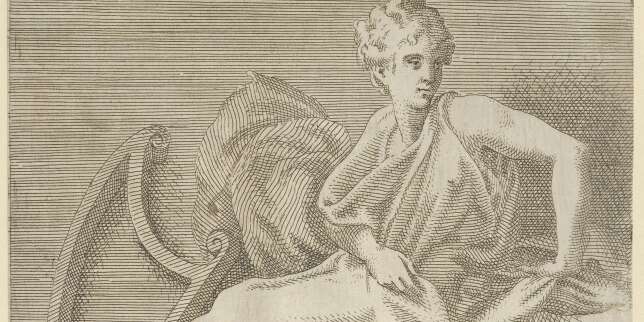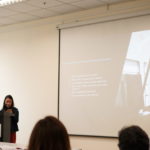The Invaders
2021 - Film & Video (Film & Video)
9:52 minutes
Ghita Skali
The Invaders by Ghita Skali is a tale that bites you. This short film, staged in the first few months of the COVID-19 pandemic, in a broader context of increasingly xenophobic and racist policies in western countries, uses comedy to flip the stigma. First, Skali sets the scene: Once upon a time, a virus came and changed the plan . A flight map is turned upside down, excerpts from television news and papers are tricked and Europeans are now the unwanted intruders in the countries of the Global South. All is familiar, but everything is different. Then, enters the main character, Cheikha Houria, a popular singer and dancer, whose daily life is shaken up when, one night, she witnesses the arrival of the invaders, some weird creatures who arrived from far away to colonise the world in their spaceship in the shape of President brand camembert cheese. Inspired by the remake of the 1970s eponymous sketch by the French humorists Les inconnus that turns the original aliens into migrants, Skali’s film features the other invaders, who are never named as such: the westerners who set up the empires that, under other names, are still very alive today. Walking a thin line between realness and absurdity, fact and fiction, The Invaders turns humour and irony into a weapon, addressing the violence of colonial history and extreme right discourses around otherness and migration.
Ghita Skali is a visual artist that uses odd news, rumors and propaganda to disrupt institutional power structures such as the western contemporary art world, state oppression and government politics. Her work often ends up as a strong critique with outcomes that penetrate channels that go beyond the exhibition space taking the form of informal trade of goods, legal documents, and things you take home for a warm night tea.
Colors:
Related works sharing similar palette

© » ARTS EQUATOR
The working processes of artists: Sabrina Poon | ArtsEquator Thinking and Talking about Arts and Culture in Southeast Asia Articles April 27, 2020 Singaporean filmmaker Sabrina Poon, better known as Spoon, talks about her work and the value of storytelling by breaking down three of her short films – Sylvia , Hello Uncle and Pa ...

© » LE MONDE
« On ne démocratise pas le rapport à la musique, à la danse en les réduisant à un “éveil musical ou dansant” » Offrir Le Monde F in octobre tombait une nouvelle pour le moins sidérante : le directeur académique des services de l’éducation nationale en Indre-et-Loire annonçait le démantèlement des classes à horaires aménagés musique et danse ( CHAM et CHAD ), de la 6 e à la 3 e , du lycée Paul-Louis-Courier, de Tours, au nom de la mixité sociale et scolaire...

© » KADIST
Allora & Calzadilla
2004This series of photographs is part of the body of work Allora & Calzadilla made regarding the situation in Vieques, an island off the mainland of Puerto Rico used for the 60 years by the U...

© » KADIST
Pierre Leguillon
2008End of 2008, Pierre Leguillon presented at KADIST, Paris the first retrospective of the works of Diane Arbus (1923-1971) organized in France since 1980, bringing together all the images commissioned to the New York photographer by the Anglo-American press in the 1960s...

© » KADIST
Pratchaya Phinthong
2009Phinthong provided 5,000 Euros to exchange for Zimbabwean dollars, the most devalued and worthless currency in the world...

© » KADIST
Daniel Boccato
2016Parrot Drawings or Paintings look like children’s drawings and seem quite innocent...

© » LE MONDE
Le jeu d’illusions grinçantes du photographe Jeff Wall, à Bâle Cet article vous est offert Pour lire gratuitement cet article réservé aux abonnés, connectez-vous Se connecter Vous n'êtes pas inscrit sur Le Monde ? Inscrivez-vous gratuitement Article réservé aux abonnés « Boy Falls From Tree » (2010), de Jeff Wall...

© » KADIST
Yoshua Okón
2015Fridge-Freezer is a 2-channel video installation where Yoshua Okón explores the darker side of suburbia, d escribed by the artist as “ the ideal environment for a numb existence of passive consumerism and social a nd environmental disengagement...

© » KQED
A 49ers Anthem Charges Back From the ’80s for Super Bowl Sunday | KQED Skip to Nav Skip to Main Skip to Footer upper waypoint Arts & Culture A 49ers Anthem Charges Back From the ’80s for Super Bowl Sunday Rae Alexandra Feb 7 Save Article Save Article Failed to save article Please try again Email A 49er and a Dolphin dancing* at the 1985 Super Bowl to classic Narada Michael Walden track, ‘We’re the 49ers.’ [*This is a lie.] (Focus on Sport via Getty Images) Look...

© » KADIST
Mandy El-Sayegh
2019Mandy El Sayegh grew up in a medicalized environment, surrounded by anatomy, biology and psychology publications; these books inspire the figures that appear throughout her work...

© » KADIST
Margo Wolowiec
2017Imagine How Many by Margo Wolowiec is a woven polyester depiction of blurred text and floral images found on social media, distorted beyond complete recognition...

© » ARTS EQUATOR
Podcast 60: The Media Landscape in the Philippines | ArtsEquator Thinking and Talking about Arts and Culture in Southeast Asia ArtsEquator Viewpoints Courtesy of Asian Arts Media Roundtable July 4, 2019 Duration: 19 min In our latest podcast, art critic Pristine de Leon gives a comprehensive overview of the media landscape in the Philippines, discussing challenges to the practice and the new platforms that are paving the way for creative, incisive and timely forms of arts criticism...








